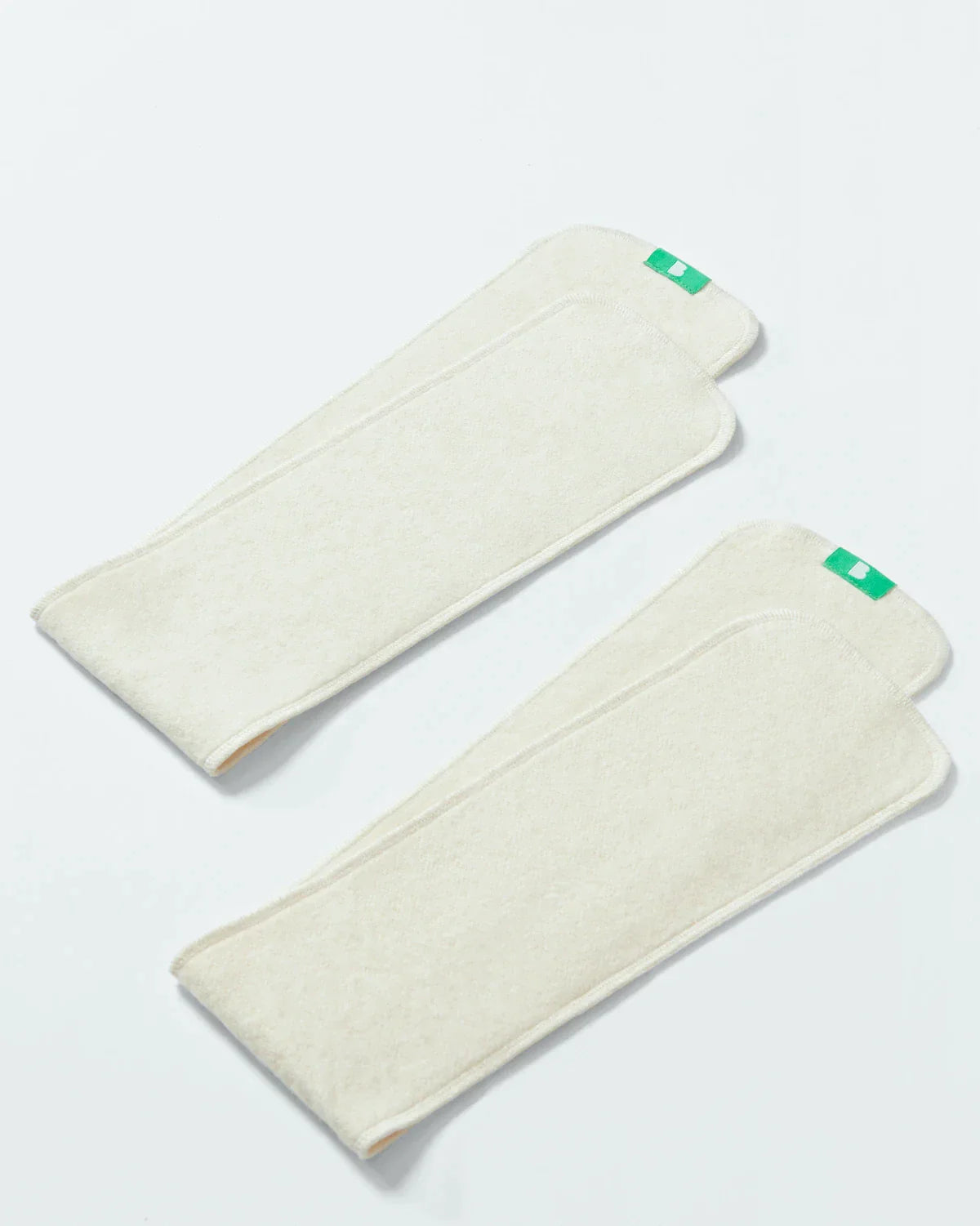The Crude Truth About Disposable Nappies
Partager
- Bambino Mio
- 12 / 07 / 2023

Many of the older generation saw plastics as a modern miracle when they first entered the markets in the 1940s and 1950s. It seemed that this durable and flexible new material was the answer to lots of problems.
It was easy to clean, lightweight and came in lots of attractive colours. Best of all, it was cheap and disposable - when something stopped working or broke, it was off to the dump and replaced by a shiny new version.
With plastics at humanity’s beck and call, why bother mending a broken wooden toy or rinsing and returning glass bottles to the shop when there were cheap and interchangeable plastic replacements pretty much to hand?
Nowadays, plastic isn’t so fantastic
To make plastics, we need crude oil, which is a fossil fuel. Fossil fuels are the main driver of climate change (1) and plastics, one of crude oil’s biggest derivatives, are a big reason for us to keep on pulling them out of the earth.
We “need” them for our shampoo bottles, our pens, our phone cases and keyboards…the list goes on and on and it also includes the disposable nappies many children wear today.
Plastics are in everything - literally
So omnipresent have plastics become, that we’re now finding microplastics (2), the tiny fragments caused by the production and the breaking down of plastic products, in our oceans and even in our lungs.
We need a new era of “Make Do and Mend”
The realisation that plastics have turned out to be a potential environmental disaster has encouraged a lot of us to look for ways to reduce the amount of plastic we use every day, especially items we only use once
We’re replacing our single-use coffee cups with reusables and many of us are turning to bamboo-handled toothbrushes, reusable wipes and glass food containers.
Repair cafes (3) are popping up around the UK, with people fixing appliances and furniture rather than sending them to landfill at the first sign of trouble. There is now a genuine love for items passed down or rescued from rubbish and restoration is a hobby for many.
It’s safe to say that we’re coming full-circle to the days of making do and mending to reduce our reliance on fossil fuels and plastics.
Disposable nappies are the elephant in the room
Well, the elephant sat atop a landfill site… It’s great that so many of us are returning to glass milk bottles, eschewing plastic straws, drinking our Americanos out of reusable cups and storing our shampoo bars in metal tins, but what about all those disposable nappies?
Let’s return to those disposable cups for a minute. We discard more than seven million single-use coffee cups daily in the UK and only 0.24% of them are recycled due to their plastic coating. Annually, we send 30,000 tonnes of discarded coffee cup waste to landfill (4), which is 0.1% of our total waste.
Single-use nappies represent 3% of the UK’s landfill burden and almost half of a young family's household waste. We throw away more than 400,000 tonnes of disposable nappies each year and once they hit landfill, they stay there and they’ll stay there for up to 500 years (5) thanks to their plastic components.
The world needs reusable nappies
Reusable coffee cups are increasingly popular but why aren’t we seeing the same rush towards reusable nappies? Reducing our use of disposable nappies would have a bigger impact than reducing our use of throwaway coffee cups, so what’s stopping us?
A lot of us, it seems, don’t know what goes into disposable nappies before we pluck them from the supermarket shelves.
The link between disposable nappies and fossil fuels
The average child is in nappies for 2.5-3 years, getting through around 5,000 of them before they’ve finished potty training.
Around 1,500 litres of crude oil (6) goes into those 5,000 nappies and that’s just for one child.
In total the world produces 167 billion disposable nappies each year, using more than 248 million barrels of crude oil, which represents around 0.7% of the world’s annual oil demand (7). Unfortunately, crude oil isn’t the only nasty going into those nappies.
Single-use nappies deliver a chemical cocktail
A 2019 study in France (8) found that disposable nappies contained more than 60 potentially hazardous chemicals and compounds, including dioxins and formaldehyde.
While the low levels of these compounds in nappies presents a negligible risk to babies’ health, single-use nappies also feature “parfum” - that catch-all term anyone with sensitive skin knows all too well. Who among us has more sensitive skin than a baby?
Reusable nappies are more convenient for the planet
They’re also more convenient than you might imagine for parents. Modern washable nappies are easy to care for and use, as well as being considerably cheaper than disposables.
The price of a branded disposable in December 2022 was 20p and once a child is out of nappies, they’ll have worn around 5,000, which adds up to £1,000 per child.
Bambino Mio’s nappy starter sets cost far less and can be used on more than one child, which only increases the savings.
Washable nappies are easy to wash and dry
Thanks to improvements in modern washing machines, a 40C wash with a laundry cleanser is enough to get soiled nappies clean and ready for more action. Line drying washable nappies is the ideal solution, but an airer or cool tumble dry will also do the trick nicely and help to prolong the life of the nappies.
The total cost of washing and drying a set of cloth nappies for 2.5 years is around £175. Even when this expense is added to the upfront costs of the nappies themselves, it still represents a big household saving, not to mention the 25% reduction in your nappy-related carbon footprint (10).
Convinced? Join the reusables revolution today!
We all owe it to our children to make the world a better, safer cleaner place to live and we can start that process from the day they’re born by choosing and using washable nappies.


















